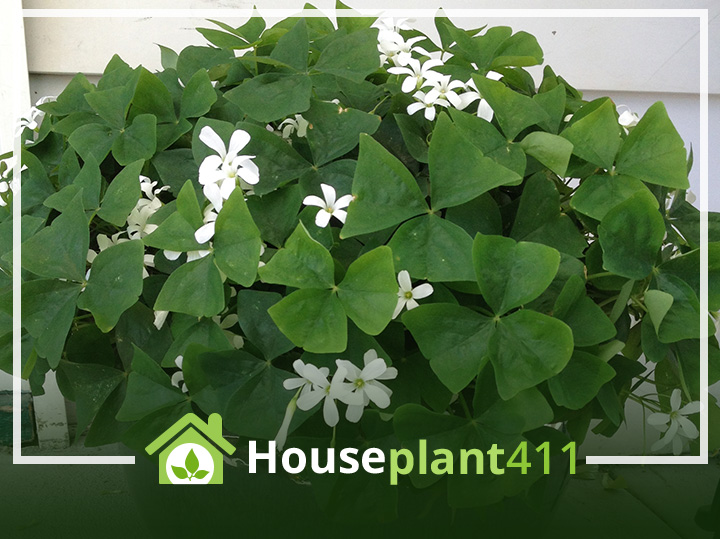Shamrock Plants, or Oxalis, appear in plant departments around St. Patrick’s Day. They have the nickname, Shamrock Plant, because of their soft, thin, triangular leaves that are divided into three leaflets, just like a lucky clover. Oxalis regnelli, the green leafed version, has small delicate white flowers, while Oxalis triangularis, or False Shamrock, has dark purple leaves and pinkish lavender flowers. Shamrocks are bulb plants and die back after they bloom; but don’t throw them out, they just need a little rest before starting to grow again.
Light: Shamrocks need bright indirect light from an east or west-facing window.
Water: Keep the soil of a Shamrock barely moist but never soggy. Allow the top 2” of soil to dry out before watering. It’s always best to water a Shamrock from the bottom so that the thin fragile stems of the plant don’t get water logged and the soil stays loose.
Fertilizer: Feed a Shamrock Plant monthly in the spring and summer when it is actively growing, use a basic houseplant food at ½ the recommended strength. Never feed a Shamrock Plant when it is dormant and the bulbs are resting.
Temperature: Shamrock Plants like cool temperatures and do best when the temperature is 60-70 degrees during the day and 55-65 degrees at night.
Humidity: Basic house-hold humidity is fine for this plant.
Soil: The best soil for a Shamrock Plant is a loose and sandy variety rather than the rich organic type.
Flowers: Oxalis regnelli has small delicate white flowers. Oxalis triangularis has delicate little purple flowers.
Pests: Shamrock Plants attract aphids, whiteflies, and spiders mites. Use the “green solution,” a mixture of ½ mild soapy water, ½ alcohol and a few tablespoons of mineral oil to get rid of the spider mites and aphids. Yellow Sticky Insect Cards are the best way to catch the whiteflies.
Propagation: Shamrocks are propagated by bulb division. With a Shamrock Plant, they are called bulblets because they are very small, white, and puffy.
Toxicity: Shamrocks have a mild toxicity if eaten in very large quantities.


